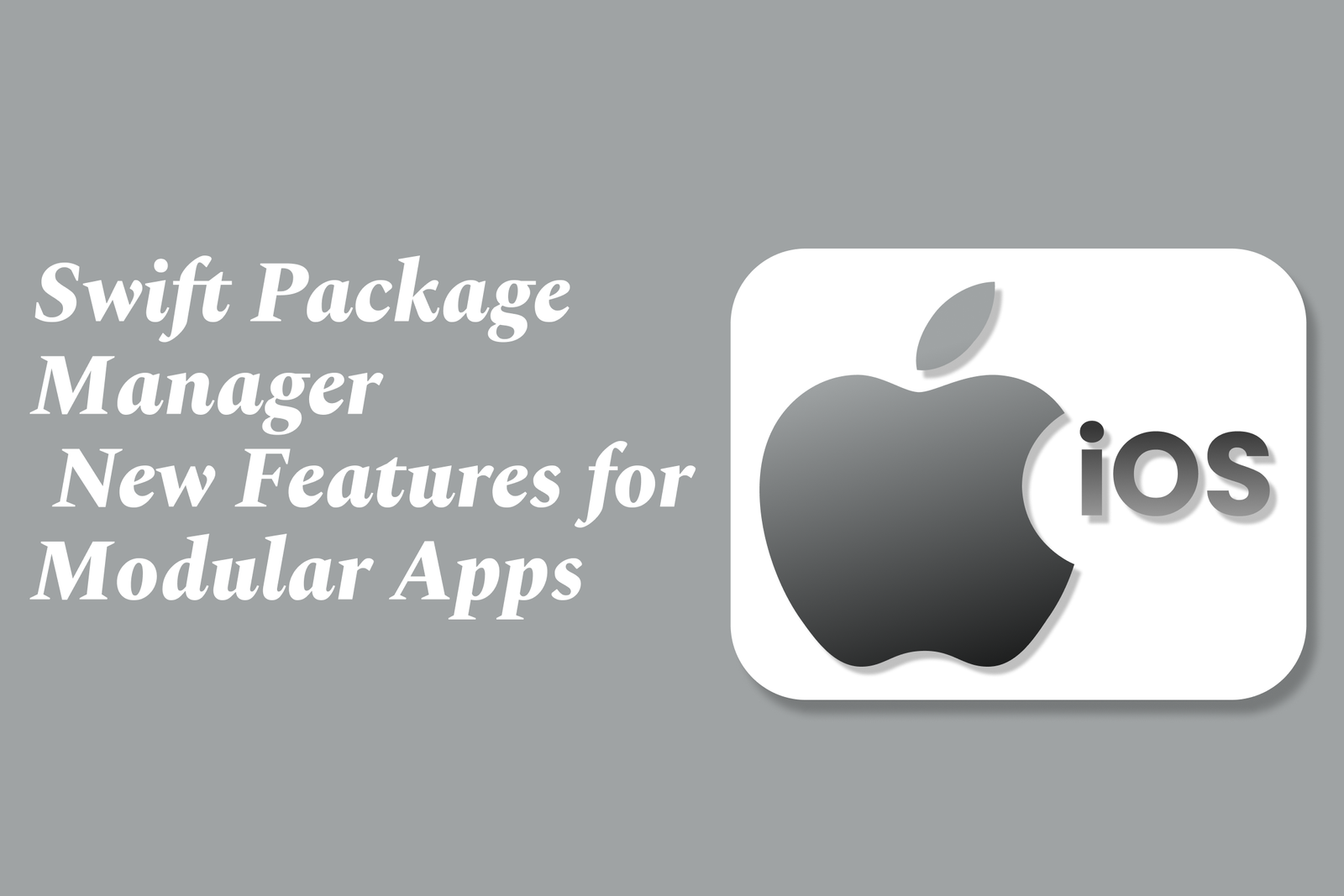Swift Package Manager: New Features for Modular Apps
Swift Package Manager streamlines modular app development by managing dependencies, supporting reusable Swift modules, and integrating seamlessly with SwiftUI. New features enhance build automation, resource handling, and package organization for scalable, maintainable Swift apps.
Swift Package Manager: New Features for Modular Apps
1 ) Introduction to Swift Package Manager (SPM)
Swift Package Manager is Apple’s official tool for managing Swift code dependencies, integrated into the Swift build system.
It automates downloading, compiling, and linking of dependencies, simplifying complex project setups.
Available since Swift 3.0, it supports modular code organization through packages, targets, and products.
2 ) Core Concepts in Swift Packages
Modules: Encapsulate Swift code under a namespace, supporting code reuse and access control.
Packages: Contain Swift source files and a manifest (Package.swift) defining the package details and dependencies.
Targets: Define build units within packages, each producing a product like a library or an executable.
Products: Libraries (importable modules) or executables (runnable programs).
Dependencies: Recursive graph of external packages required by a target, automatically managed by SPM.
3 ) Advantages of Modularizing iOS Apps with SPM
Modularization breaks down large projects into independent, self contained modules.
Benefits include improved build times, easier testing, autonomous team development, and faster iteration.
SPM handles dependency versioning, retrieval, and build integration smoothly.
First party Apple support ensures seamless compatibility and integration with Swift and Xcode.
4 ) Using SwiftUI with Swift Package Manager for Modularization
Combining SwiftUI and SPM enables declarative UI design with modular architecture.
Developers can create reusable UI modules and interface/implementation separation.
Supports dependency injection and unit testing within modularized components.
Facilitates transitioning from vertical to horizontal module dependencies for better architecture.
5 ) Practical Techniques and Enhancements
Use SPM plugins (e.g., SwiftGen) to automate resource generation per module, enhancing maintainability.
Employ the @_exported import attribute to bundle commonly used dependencies in a single module, reducing repetitive import statements.
Organize modules thoughtfully to prevent circular dependencies and improve code discoverability.
Structuring packages with clear versioning and API boundaries supports long term maintainability.
6 ) Challenges and Community Discussions
Custom build configurations beyond Debug and Release are not natively supported in Swift packages, limiting some testing scenarios.
Developers discuss potential improvements, such as adding support for alternative build configurations.
Strategies exist for workarounds like using environment variables but require careful planning.
7 ) Best Practices in Modular Architecture with SPM
Define packages based on versioning and API stability needs.
Organize targets and products to represent logical units of functionality.
Validate boundaries to reduce interdependence and avoid “spaghetti code.”
Prefer grouping related imports into core dependency modules for clarity and convenience.
8 ) Conclusion
Swift Package Manager has evolved to significantly support modular app development, especially for iOS projects.
Its integration with SwiftUI, along with community driven techniques, empowers developers to build scalable, maintainable, and high performance native Swift applications.
Ongoing enhancements and discussions promise even greater flexibility and power for modular software design in the Swift ecosystem.
https://justacademy.in/news-detail/new-features-in-flutter-4.0-stable
https://justacademy.in/news-detail/flutter-forward-2025-recap
https://justacademy.in/news-detail/the-rise-of-react-native-in-iot-applications
https://justacademy.in/news-detail/react-native?s-secret-weapon:-faster-app-load-times
https://justacademy.in/news-detail/react-native-vs-flutter:-developer-opinions-from-2025
Related Posts
Java supports GDPR and data privacy by enabling secure data handling through encryption, controlled access, and precise data management. It allows developers to minimize PII exposure, ensure data confidentiality, and design workflows that comply with data protection regulations effectively.
Java code quality tools have evolved to include advanced static analysis, integrated security checks, and AI-powered code reviews. These updates help developers detect bugs, enforce coding standards, and enhance security, streamlining the development process and improving overall code reliability.
Java remains a cornerstone in big tech companies, evolving with modern features like records, pattern matching, and virtual threads. Its robust ecosystem, enhanced performance, and growing AI integrations keep it vital for both legacy systems and innovative new projects.
Java and CI/CD pipeline optimizations streamline Java application development by automating builds, tests, and deployments. They improve efficiency through parallelization, caching, and secure secrets management, enabling faster feedback loops and more reliable, scalable software delivery.
Java supports modern cryptography standards through its flexible Java Cryptography Architecture (JCA), enabling integration of advanced algorithms like AES, EdDSA, and post-quantum tools. Libraries like Bouncy Castle offer FIPS-certified, hardware-accelerated implementations for secure development.
Java 23 enhances record patterns by enabling concise, direct destructuring of record components within pattern matching, simplifying type checks and data extraction. This improvement boosts code readability and expressiveness by reducing boilerplate in handling immutable data classes.
Java remains a top choice for mobile app backends, powering scalable, secure, and high-performance server-side solutions. Latest trends include cloud-native microservices, reactive programming, and enhanced JVM optimizations, enabling efficient, flexible, and robust mobile backend development.
Java SE 24 and LTS Java SE 21 offer enhanced features and performance, while Apache Spark 4.0.0 introduces Scala 2.13 support and advanced ML and SQL capabilities. Together, they empower developers to build scalable, high-performance data applications with modern tools.
JUnit 5 modernizes Java testing with a modular architecture, improved assertions, and seamless Java 8+ support. Beyond JUnit, tools like Mockito and AssertJ enhance mocking and assertions, creating a powerful, flexible ecosystem for writing clean, efficient Java unit tests.
Java plays a pivotal role in cloud automation tools by providing a robust, platform-independent language used to build scalable automation frameworks like Jenkins and Selenium, enabling efficient CI/CD pipelines, testing, and orchestration across diverse cloud environments.










